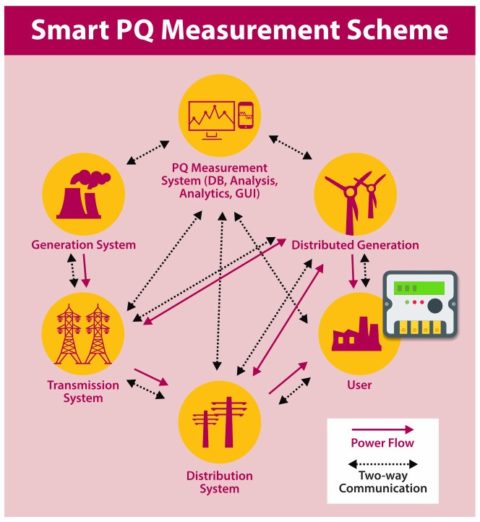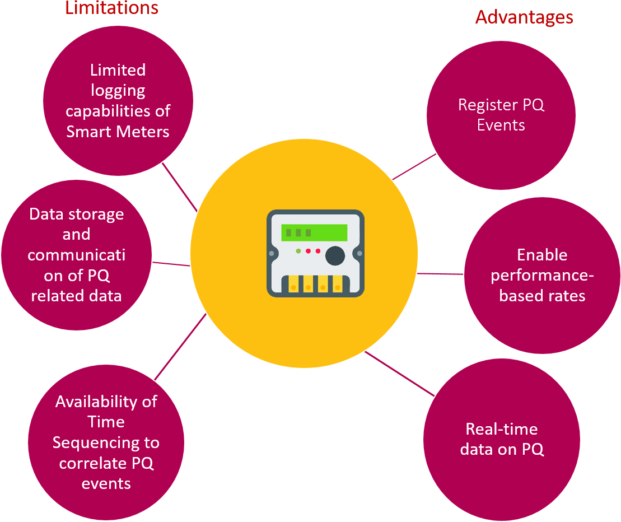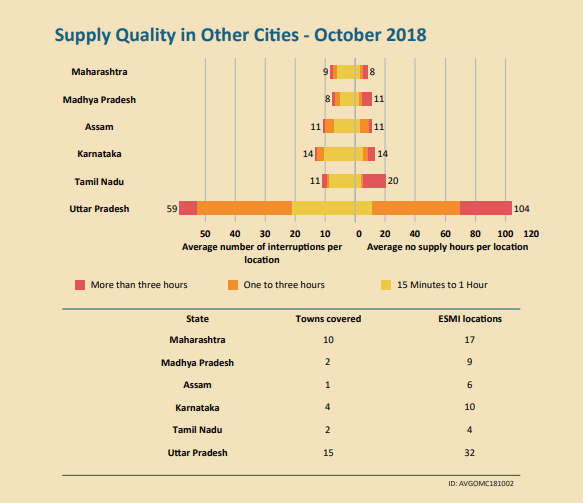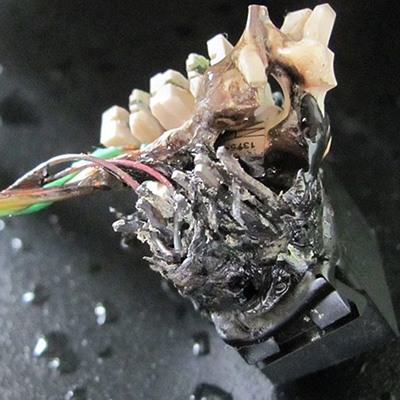Published On: Dec 15, 2018
Advanced Metering Infrastructure (AMI) projects enabled by Smart Meters are set to revolutionize electrical distribution in India. But will it help to improve the state of Power Quality (PQ)?
INTRODUCTION
The stage for India to get ‘smart’ electricity is all set. From the launch of SAUBHAGYA mission by GoI to achieve 100% household electrification to its target of developing 100+ smart cities, a reliable and efficient supply of electricity is essential not just for the success of such initiatives but to the healthy growth of Indian economy itself. Smart meter has even a greater role to play in smart grid and is considered as most important aid for future energy management. Overall, it is beyond doubt that the ‘Smart’ meters are marked to play a central role in achieving the modernization of power distribution in India.
The Govt. of India, through various initiatives with the State Govt. and Partner agencies, has created a tremendous thrust on smart meters in the last few quarters.
- Tata Power Delhi Distribution Ltd (TPDDL), a joint venture of the Delhi government and Tata Power, is set to install 2.5 Lakh smart meters and also launch a mobile app for Android (to start with).
- Asian Development Bank (ADB) is planning to scale up a satellite-based smart meters project, implemented for 5000 households near Varanasi, given each rural consumer was found to have improved power quality, shorter outage durations, and flexible payment options
- The state of Harayana is set to procure 10 Lakh Smart Meters in the years ahead
As Introduction of Smart Meters and the AMI initiatives in general take the centre-stage, it is pertinent to assess the possibilities and impact for improving PQ.
SMART METERS AND THE SMART PQ MEASUREMENT SCHEME
The smart PQ measurement scheme includes several entities. The success of addressing PQ issues at generation, distribution or consumer end, is therefore a result of integrated effort. And Smart Meters are the key in terms of building up the data and insights from the bottom-up when power system has become multi directional than ever before.
Leveraging strengths and overcoming limitations
Several articles from APQI have previously discussed various aspects of PQ measurements in smart grids and AMI. The blog on Power Quality Aspect of Smart Grid published some time ago highlights the PQ challenges in the smart grid ecosystem. The role of AMI in meeting the needs for PQ Analysis of modern facilities has also been discussed in detail. The same article highlights the leverage and limitations that the Smart Meters of today provide in PQ Monitoring and Analysis.
To summarise, the insights from these articles indicate that Smart Meters come with their own strengths and limitations in enabling Power Quality monitoring and analysis. The key to advancing towards better PQ is to leverage the strengths of Smart Meters and overcome its limitations with appropriate strategy.
SMART METERS TO IMPROVE PQ – WHAT TO EXPECT?
Historically, the primary success factors of smart meters can be attributed to the equal set of advantages it creates for consumer and the utilities. Transparency in consumption, billing, improved service delivery, energy savings and lower outages owing to more frequent or real-time monitoring are still the dominant result areas on which the smart meter is expected to deliver. While an exhaustive picture of PQ is desirable, and smart meters are an ideal access point to achieve the same, the measurement system capabilities of most of the smart meters available in the market are relatively limited.
At the Grid level too, provisions to collect, store and analyse the data to improve PQ are still focused on the basic parameters. For instance, the Meter Data Management specifications in an AMI, as laid out by Central Electricity Authority requires the provision to collect and store PQ related data such as events pertaining to under voltage/over voltage etc.
As a result, to drive a significant improvement in the state of PQ an extended system of measurement, relying on PQ Analysers or other PQ Monitoring devices, is highly recommended. Supportive initiatives at consumer and grid level to monitor PQ are the way ahead.
POWER QUALITY MONITORING WITH SMART METERS – USE CASES
PQ Monitoring with Smart Meters for Industrial Customers by Tata Power
The results of a pilot initiative conducted by Tata Power Co. Ltd. Which aimed to leverage the strengths of smart meters installed at key Customers to reduce the PQ issues in electrical network are promising.
The company installed smart meters for high value consumers to record instantaneous parameters such as active/reactive power, energy, per phase voltage, current, PF, frequency etc. on hourly basis. The power quality data was captured in the AMR server and stored in Meter. The data management system collated the data at a predefined frequency and it was presented for analyses to identify PQ disturbance events.
With the Pilot, the company was able to identify several consumer supply points
with voltage related abnormalities. Further, the company was able to alert the customer and ensure quick resolution of the issues with appropriate measures.
The advantages of the Pilot included
- Proactive identification of Customers with PQ events
- Co-relate PQ issues experienced by the consumer at his premise up to the feeder emanating point in Distribution sub-station
- Sites with PQ issues could be prioritise for its severity and/or sensitivity
Smart Meters to Monitor Power Availability and Quality Across India by Prayas GroupPrayas Energy Group, a non-governmental, not-for-profit organisation based in Pune, India – has initiated two projects to monitor quality and availability at the customer location using Smart Meters. The Electricity Supply Monitoring Initiative (EMSI) provides evidence based feedback about electricity supply quality from consumer locations across India. The eMARC initiative focuses on monitoring and analysis of residential electricity consumption, including device level consumption insights, in urban and rural areas. The aim is to use smart energy meters to develop an understanding of residential electricity consumption, which has a share of 25% in total power consumption, to help bridge the demand supply gap. Currently, the project monitors the quality of power in over 400 locations in 23 states in India. While the initial results from the project provide highly granular insights, in the years to come it promises to hold a very authentic and structured repository of usage data for understanding power quality in India. In addition to India, the EMSI project is also operational in Kenya and Indonesia. The advantages of use of Smart Meters in the pilot in view of PQ monitoring and improvement include:
|
Source: Report on supply quality from EMSI for the month of Oct 2018, as available on the site http://www.watchyourpower.org |
Under ESMI, mobile data enabled monitors designed specifically for the initiative are being deployed at each location to capture the supply quality data.The data and analysis are published daily at watchyourpower.org.
The initiatives, for the first time, provides a country level multidimensional analysis of electricity availability, reliability and quality. The use of Smart Meters in these projects have set an example and created new possibilities to develop a macro level understanding the PQ issues built through a stream of on-the-ground insights from micro-level data.
SMART METERS TO IMPROVE PQ – STANDARDS HOLD THE KEY TO SUCCESS
PQ is multidimensional and the definition of good PQ may differ with location. It’s the benchmarking of relative values of key PQ parameters, that usually help to determine the absolute quality of power at any location. The standards inscribed in the PQ monitoring tools or devices, basic or advanced, therefore hold the key to the success of improving PQ.
A joint responsibility – Device manufacturers and Policy Makers
As India and several other developing countries look ahead towards a large-scale implementation of Smart Meter technology, it’s highly critical to have a common agreement on the common minimum level of capabilities required to monitor key PQ parameters through Smart Meters. Further, the success of PQ monitoring through Smart Meters is closely linked to convergence of benchmarks for good PQ that are useful to the power distribution companies as well as the consumers and plausible for the Meter manufacturers to offer in their products.
Overview of Smart Meter Standards in India:
- 2016 – AMI functional specification released by CEA
- Standard for Smart Meter: IS 16444
- Standard for Communication: IS 15959 Part II
- NABL labs are ready to test the Smart Meters as per IS 16444
- Manufacturer readiness is being ensured
The Central Electricity Authority has issued the guidelines for functional requirements in AMI in 2016. The procurement of Smart Meters has already began as per the qualifying criteria mentioned in these guidelines. However, to ensure real success of Smart Meters to monitor and improve PQ will depend on a more comprehensive effort to amend policy frame-work, enable Regulation, build consumer awareness and create a sustainable business model in near future. This will only be possible with sincere participation from Policy Makers and Manufacturers alike, with inputs from the Consumers and based on insights from research conducted by Private, NGOs and Govt. institutions.
Creating and implementing AMI is a capital intensive exercise and ensuring the right PQ Standards for it to be integrated in the Smart Meters at the right time remains to be a critical concern in immediate future.
CONCLUSION
The smart meters will need additional capabilities to capture and correlate the PQ data on a real-time basis.
Typically, these capabilities would include:
- Voltage spikes/swells, harmonic distortions, transients, voltage flickers and more…
- A better sampling rate of recording for the PQ parameters
- Data storage and management capabilities to be enhanced
- Enforcement of PQ Standards, across various smart meter labels are required
The main objective of smart meters will continue to be about the systematic energy management with the active participation of end user by coordinating utility companies in making intelligent decisions. However, in the near future, as the Smart Meters technology and implementation evolves, a partnering approach between consumers and distribution companies will help enable smarter PQ monitoring and improvement.
REFERENCES
- Functional Requirements of Advanced Metering Infrastructure (AMI) http://www.cea.nic.in/reports/others/god/dpd/ami_func_req.pdf
- Smart Meters to Rationalise Energy Consumption in India https://economictimes.indiatimes.com/industry/energy/power/smart-meters-to-rationalise-electricity-consumption-in-india/articleshow/63347276.cms
- Smart Metering for Smart Manufacturing – https://www.electricalindia.in/smart-metering-for-smart-monitoring/
- PQ Measurement Capabilities in Smart Meters –EPRI – https://docplayer.net/30888563-Power-quality-measurement-capabilities-in-smart-revenue-meters-tom-cooke-project-manager-epri-power-quality-monitoring-and-analytics.html
- Smart Electricity Meters in Rural India – https://economictimes.indiatimes.com/industry/energy/power/smart-electricity-meters-in-rural-india-a-win-win-asian-development-bank/articleshow/66400296.cms
- Smart Meters to be Installed in Harayana – http://www.uniindia.com/10-lakh-smart-meters-to-be-installed-in-haryana/north/news/1422990.html
- Power Quality Monitoring in Smart Grids – Gary W. Chang, Ph.D., P.E., FIEEE National Chung Cheng University Taiwan, https://www.ieee-pes.org/presentations/gm2014/PESGM2014P-002394.pdf
- EMSI Portal by Prayas Group – http://www.watchyourpower.org/uploaded_reports.php










